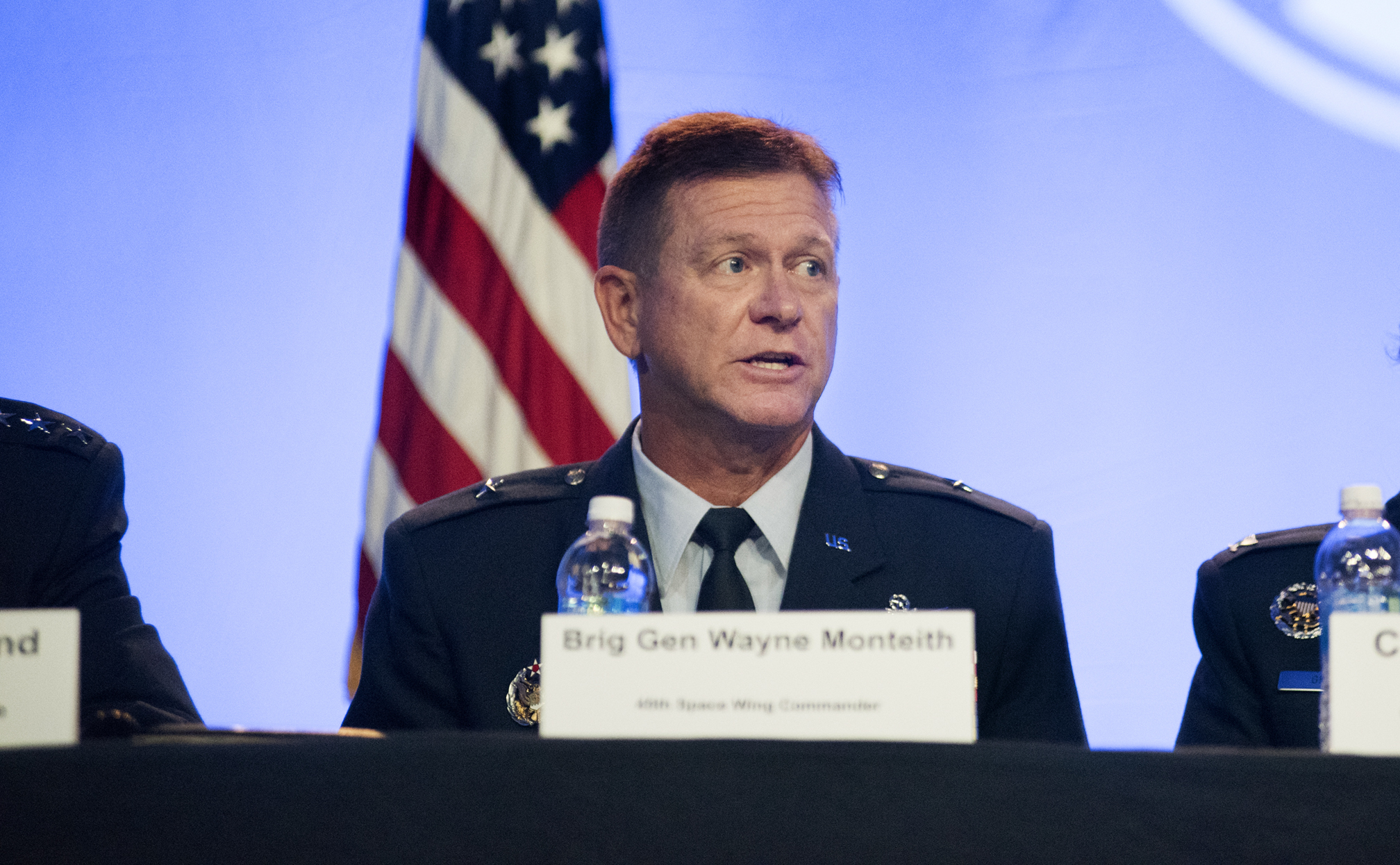
Brig. Gen. Wayne Monteith, 45th Space Wing boss, credited SpaceX with helping USAF launch into space faster. Staff photo by Mike Tsukamoto.
Air Force space launch is getting faster thanks to commercial partnerships with companies like SpaceX, Brig. Gen. Wayne Monteith, commander of the 45th Space Wing said at ASC17 Tuesday. The X-37B launch on Sept. 7 marked the wing’s 15th launch of 2017, which means that “we have launched more than Russia, and we have launched more than China” this year, Monteith said.
“We’ve taken our capability to launch quickly from 72 hours last year, to now I can shoot twice in 24 hours,” Monteith said. The 45th SW has also landed seven SpaceX Falcon 9 first-stage boosters this calendar year. As the fiscal year ends, Monteith said the 45th SW has “launched 21 space missions,” representing “over one quarter of all space missions in the world.”
The speed of SpaceX’s launch operations are a big part of this new efficiency. The company “has forced us to become better at what we do,” Monteith said. “We are adopting commercial business practices, we are becoming more efficient, more effective, more affordable.” In concert with SpaceX, the 45th SW has been able to “reduce the cost of a single launch for them by over 50 percent.”
“SpaceX does not launch on schedule,” he said. “SpaceX launches on readiness.” As the Air Force’s partnership with SpaceX grows, Monteith expects that “they will help us get to 48 launches a year” in the near future.
Other areas within the service’s space mission are growing as well. In space situational awareness, the service averaged 10 collision warning notifications per day last year and reported 100 occasions where satellite owners maneuvered their satellites to avoid collisions, said Col. Todd Moore, commander of the 21st Space Wing.
Threats within the space domain have also increased. Col. David Miller, commander of the 460th Space Wing, leads the Air Force’s ballistic missile warning and infrared surveillance work. “When we started this business there were two principal adversary countries that we were concerned about and about four different missile types,” Miller said. “Today we’re approaching 20 different nations with ballistic missile capability and dozens of different missile types.”

